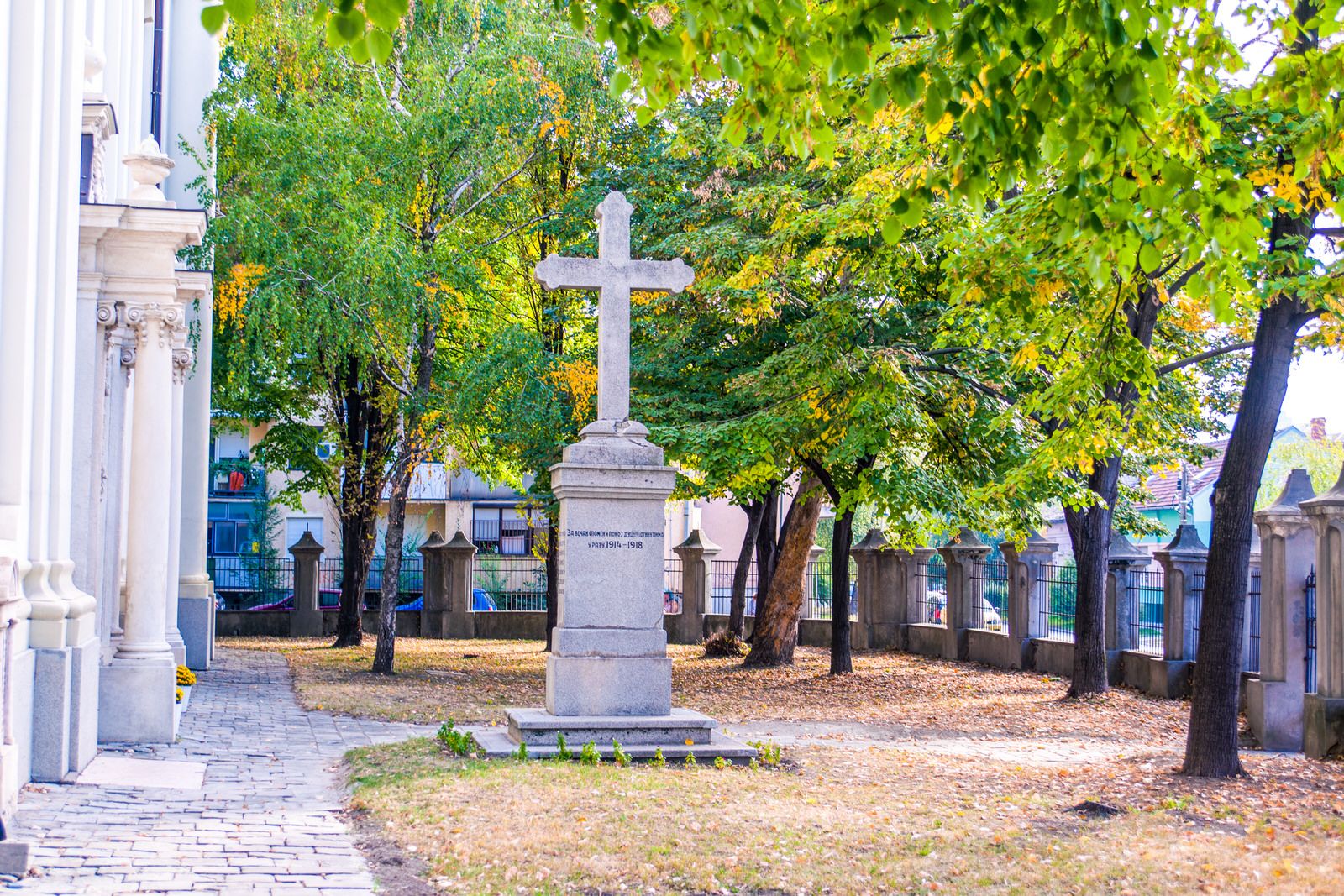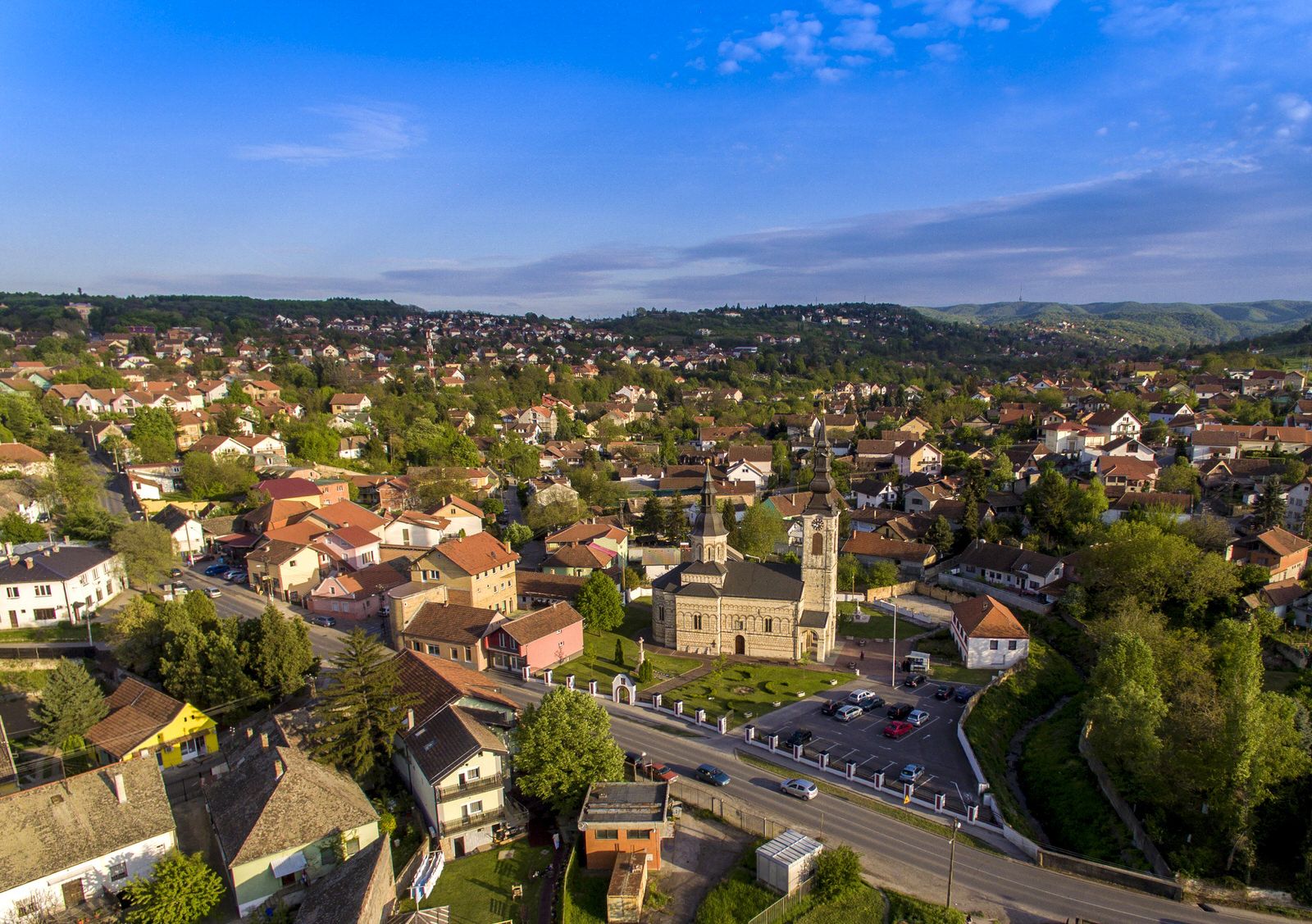ALMAŠ NEIGHBORHOOD
 Almaš neighbourhood is a part of the city full of curved streets that radiate from the head-office of Matica srpska. The above-mentioned part of the city was formed during the first half of 18th century by migration of inhabitants from the nearby Almaš. The biggest Orthodox Church in Novi Sad, Three Holy Hierarchs, locally known as Almaška Church, built in classicist style during the period from 1797 to 1808 at the site of an older church is located in Almaška Street. The Church is a monument of culture of exceptional significance. The iconostasis closure was wood carved by Aksentije Marković, and the icons were painted by Arsenije Teodorović (1768-1826), one of the most significant and most influential Serbian painters by the end of the
Almaš neighbourhood is a part of the city full of curved streets that radiate from the head-office of Matica srpska. The above-mentioned part of the city was formed during the first half of 18th century by migration of inhabitants from the nearby Almaš. The biggest Orthodox Church in Novi Sad, Three Holy Hierarchs, locally known as Almaška Church, built in classicist style during the period from 1797 to 1808 at the site of an older church is located in Almaška Street. The Church is a monument of culture of exceptional significance. The iconostasis closure was wood carved by Aksentije Marković, and the icons were painted by Arsenije Teodorović (1768-1826), one of the most significant and most influential Serbian painters by the end of the
18th century and first half of the 19th century. The wall paintings and those on the church nave ceiling were also painted by Arsenije Teodorović while the parts of the altar space were decorated with paintings of the Ukrainian painter Andrey Shaltisti. Famous Serbian painter Uroš Predić (1857-1953) painted the icon of Virgin Mary on the throne. The art historians consider
the icons painted by Arsenije Teodorović some of his best works.
The new Cultural Station set to enrich the cultural offer of the city as the European Capital of
Culture 2022 is located in former factory for colouring of silk alongside the old factory funnel-
Info: You may visit the church if the church service is not in progress or if some other ritual is not taking place. If you are interested in making a group visit you have to call ahead +381 (0)21 551 774
JEVREJSKA STREET
 Jevrejska Street in Novi Sad is a part of former Jewish quarter that was formed in 1748. A part of contemporary Futoška Street formerly known as “Osečka” was declared a ghetto following a decision made by the Magistrate of what used to be a free royal city of Novi Sad. The street was in harmony with the development of the city, as well with the sufferings to which it was exposed to, particularly the one that took place during the rebellion when the city was bombarded with cannons from Petrovaradin Fortress in 1849. The restored Jevrejska Street from 19th century was a street filled with large and small shops, craft shops, doctor’s offices, textiles and family houses of notable citizens of Novi Sad. Nowadays, Jevrejska Street is a busy main street of the city dominated by the Novi Sad Synagogue. Along with the building of the former Jewish School and the building that accommodated Jewish community officials (Jewish Community Centre), Novi Sad Synagogue represents a spatial cultural-historical unit that was built in 1909 according to the design of Lipot Baumhorn. This monumental complex is one of the largest in this part of Europe.
Jevrejska Street in Novi Sad is a part of former Jewish quarter that was formed in 1748. A part of contemporary Futoška Street formerly known as “Osečka” was declared a ghetto following a decision made by the Magistrate of what used to be a free royal city of Novi Sad. The street was in harmony with the development of the city, as well with the sufferings to which it was exposed to, particularly the one that took place during the rebellion when the city was bombarded with cannons from Petrovaradin Fortress in 1849. The restored Jevrejska Street from 19th century was a street filled with large and small shops, craft shops, doctor’s offices, textiles and family houses of notable citizens of Novi Sad. Nowadays, Jevrejska Street is a busy main street of the city dominated by the Novi Sad Synagogue. Along with the building of the former Jewish School and the building that accommodated Jewish community officials (Jewish Community Centre), Novi Sad Synagogue represents a spatial cultural-historical unit that was built in 1909 according to the design of Lipot Baumhorn. This monumental complex is one of the largest in this part of Europe.
Lipot Baumhorn (1860-1932) was a Pest born architect whose construction undertakings, among which the most dominant were the synagogues, are nowadays considered as one of the most representatives examples of architectural, secession heritage of numerous central European cities. Baumhorn constructed 25 synagogues in Austria-Hungary since 1880, two of which were constructed in Vojvodina- in Zrenjanin and Novi Sad. The central city zone of Novi Sad is home to following representatives of secessionist construction skills of Lipot Baumhorn: Synagogue complex made of the temple itself along with the Jewish School and Jewish Community Centre, Building of the Savings Bank-nowadays Vojvođanska bank (1904), Menrat’s palace (1908) and Palace belonging to lawyer Tomin (1909).
SREMSKA KAMENICA
 Sremska Kamenica is a part of the city located at the foothills of Fruška Gora. It is renowned for its specific micro-climate making it ideal for rehabilitation. The centre of the settlement is dominated by churches and monument dedicated to Jovan Jovanović Zmaj. The Nativity of Virgin Mary Serbian Orthodox Church is a baroque building built in 1758 at the site of an old church. Stefan Gavrilović painted the iconostasis in 1802. The Roman Catholic Church of Discovery of the Holly Cross at Zmaj square was built in 1811. The following monuments and institutions of culture are located in Sremska Kamenica: Marczibányi Karáscony Castle is located in Kamenički Park. The contemporary outlook of the castle dates back to 1836. Kamenički Park is a spacious arranged park originally built around the castle. The monument dedicated to Jovan Jovanović Zmaj (1833-1904), a poet, physician and a member of the Serbian Royal Academy, reminds us of the fact that this particular individual is our most read and most favourite author of children poetry for entire generations. The house where the famous poet and physician Jovan Jovanović Zmaj used to live from 1875 to 1904 has been turned into Zmaj museum.
Sremska Kamenica is a part of the city located at the foothills of Fruška Gora. It is renowned for its specific micro-climate making it ideal for rehabilitation. The centre of the settlement is dominated by churches and monument dedicated to Jovan Jovanović Zmaj. The Nativity of Virgin Mary Serbian Orthodox Church is a baroque building built in 1758 at the site of an old church. Stefan Gavrilović painted the iconostasis in 1802. The Roman Catholic Church of Discovery of the Holly Cross at Zmaj square was built in 1811. The following monuments and institutions of culture are located in Sremska Kamenica: Marczibányi Karáscony Castle is located in Kamenički Park. The contemporary outlook of the castle dates back to 1836. Kamenički Park is a spacious arranged park originally built around the castle. The monument dedicated to Jovan Jovanović Zmaj (1833-1904), a poet, physician and a member of the Serbian Royal Academy, reminds us of the fact that this particular individual is our most read and most favourite author of children poetry for entire generations. The house where the famous poet and physician Jovan Jovanović Zmaj used to live from 1875 to 1904 has been turned into Zmaj museum.
The main street in the pedestrian zone of Novi Sad, as well as the oldest grammar school in the city carry the name of Jovan Jovanović Zmaj. Zmajeve dečje igre (Zmaj’s games for children) are organised every year in Novi Sad, as one of the largest children festivals in Serbia. Info: Zmaj Museum + 381 (0)21 462-810 www.museumns.rs Accommodation is possible at: Guesthouse “Vila Evanđelina” www.vilaevandjelina.com Guesthouse “Zmajevo gnezdo” www.zmajevognezdo.rs Guesthouse “Ilidža” tel: +381(0)21 462 860 Čarda Association of fishermen and aficionados of the Danube “Sremac”is located on the Danube bank, Karađorđeva 16, +381 (0)21 462-267, (0)64 660-9707.